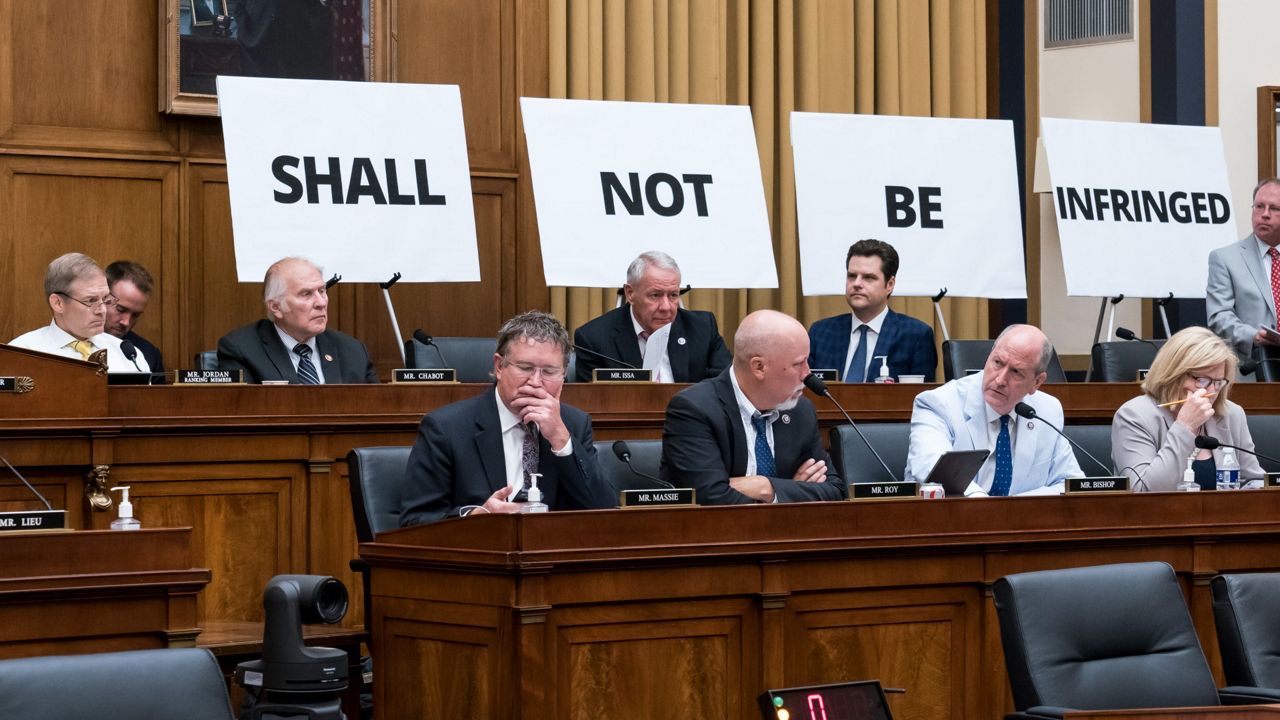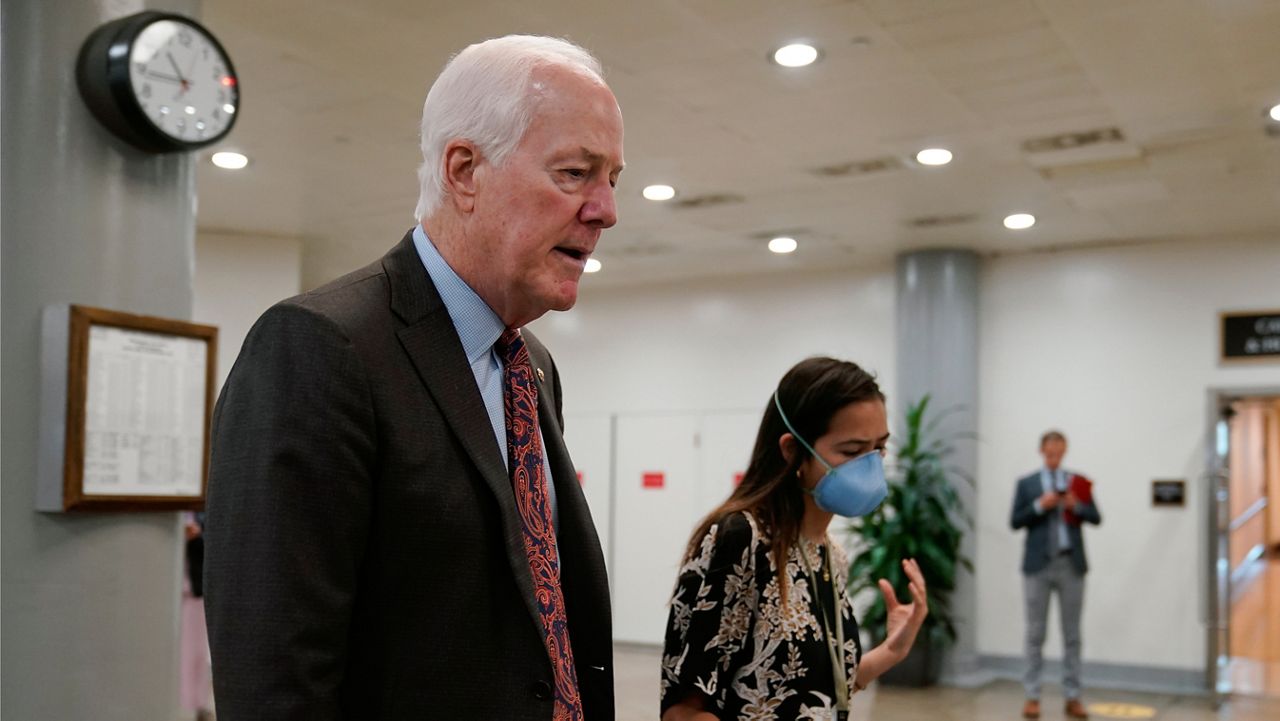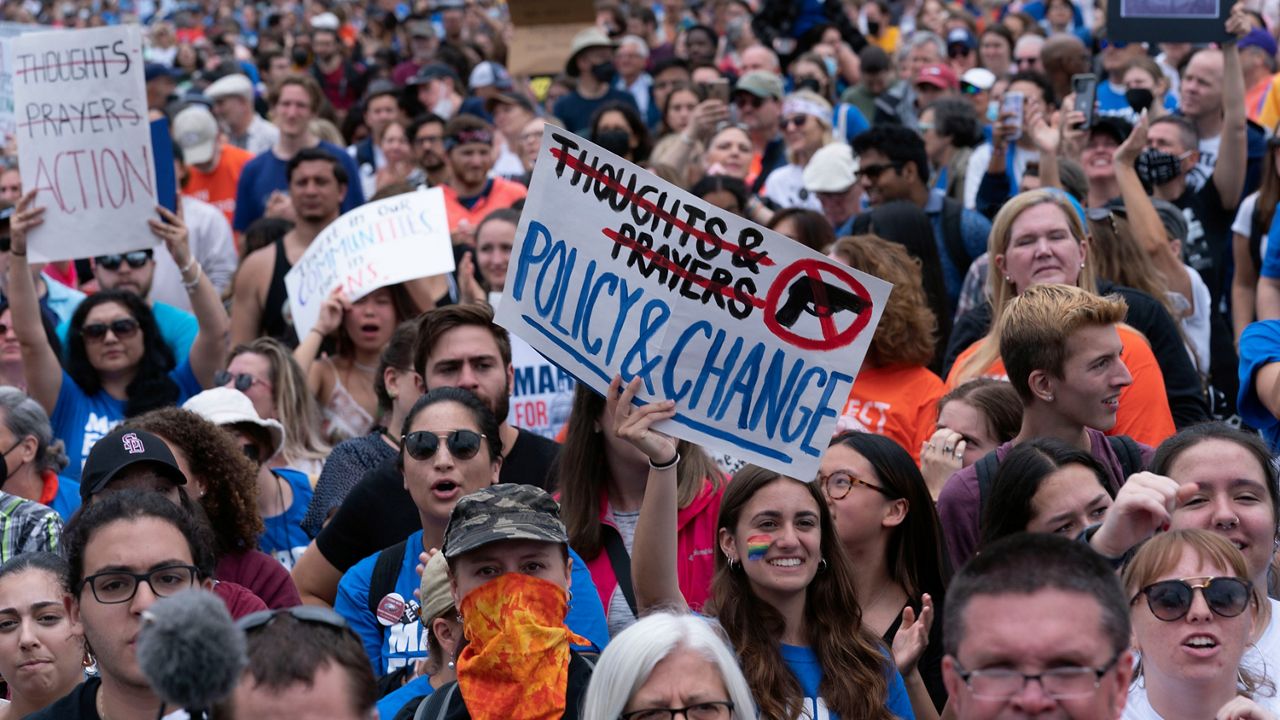When Kimberly Rubio ran one mile, barefoot, to Robb Elementary on May 24, it was the last place she could think to look for her daughter, 10-year-old Lexi.
She had already checked Uvalde’s hospital, and her father had driven an hour-and-a-half to a San Antonio’s hospital to check there.
“At this point, some part of me must have realized that she was gone,” Rubio testified remotely before a House oversight panel on Wednesday.
She had just seen Lexi hours earlier, when she received an award at school and was recognized for getting straight A’s.
“We promised to get her ice cream that evening, told her we loved her and we would pick her up after school,” Rubio, a mother of four other children, testified with her husband by her side.
“And then we left. I left my daughter at school, and that decision will haunt me for the rest of my life.”
Along with Rubio, Miah Cerillo — an 11-year-old girl who smeared her friend’s blood on her body to make herself appear dead to the gunman who attacked Robb Elementary — and the mother of a young man who was wounded in a Buffalo supermarket shooting testified before the House oversight committee Wednesday in a hearing scheduled to “address the gun violence epidemic.”
The panel heard from them as a bipartisan group of senators work to come to a compromise on gun safety legislation after the Uvalde and Buffalo shootings. The package is likely to include expanded background checks and incentives for states to implement red flag laws, which could allow for weapons to be confiscated when owners considered a threat to themselves or others.
“This time we have more manpower. We have more volunteers, we have more advocates,” said Sen. Chris Murphy, D-Conn., the chief negotiator for potential legislation.
“As I stand here today, as we are working through negotiations with our Republican colleagues, I am preparing to succeed,” Murphy said at a rally near the U.S. Capitol on Wednesday led by the advocacy group Everytown for Gun Safety. “I am preparing to save lives.”
President Joe Biden and some relatives of victims of recent mass shootings have called for lawmakers to go further by banning “assault weapons” and high-capacity magazines, but any compromise is likely to be narrower in scope.
Dr. Roy Guerrero of Uvalde Memorial Hospital, who worked on the day that 19 students and two teachers were killed there, testified Wednesday about what those weapons can do to a child’s body, as he saw among the dead brought to the hospital that day.
“Two children whose bodies had been pulverized by bullets fired at them — decapitated — whose flesh had been ripped apart,” he said. “The only clue into their identities was a blood-splattered cartoon clothes still clinging to them.”
Dr. Gurererro said that on the day of the shooting, he "raced to the hospital to find parents outside yelling children’s names in desperation and sobbing."
"They begged for any news related to their child," he continued. "Those mothers’ cries, I will never get out of my head."
Fourth-grader Miah Cerrillo, in a pre-recorded video, recalled the horrors of the Uvalde massacre, telling lawmakers that she saw her teacher get shot in the head before she looked for a place to a hide.
The gunman, she said, "told my teacher 'good night' and shot her in the head."
"When I went to the backpacks, he shot my friend," she recalled. "I thought he was going to come back to the room, so I grabbed the blood and I put it all over me, and ... just stayed quiet."
She then took her deceased teacher's cell phone and called 911 to seek help.
Cerrillo concluded by saying she no longer feels safe at school: "I don't want it to happen again."
Kimberly Rubio called on Congress to ban assault rifles, high-capacity magazines, raise the legal age to purchase semi-automatic weapons to 21, plus red flag laws and background checks.
“Today we stand for Lexi. And as her voice, we demand action,” she said. “For some reason, to some people — to people with money to people who fund political campaigns — that guns are more important than children.”
"Somewhere out there, there's a mom listening to our testimony thinking 'I can't even imagine their pain,' not knowing that our reality will one day be hers unless we act now," she concluded.
Her call was echoed by Zeneta Everhart, whose son, Zaire Goodman, 21, survived the shooting at a Buffalo Tops Friendly Market that left 10 Black Americans dead. She said her son has a hole in his neck, two in his back and one in his left leg “caused by an exploding bullet from an AR-15.”
“As I clean his wounds, I can feel pieces of that bullet in his back. Shrapnel will be left inside of his body for the rest of his life,” Everhart testified. “Now, I want you to picture that exact scenario for one of your children. This should not be your story or mine.”
She called on elected officials to fulfill their “duty” by passing legislation to protect people like her son.
Another survivor-turned-advocate named Greg Jackson, Jr., who was shot in Washington, D.C. nine years ago, told lawmakers he knew the reality of true gun reform passing is unlikely.
“Every year, over 110,000 people are shot or killed by gun violence. So that means nearly a million lives have been directly devastated since I laid in that hospital, looked up at that television and watched the members of this chamber debate this topic,” said Jackson, director of the Community Justice Action Fund.
Yet mass shootings, one policy expert told lawmakers Wednesday, are only a fraction of gun deaths and incidents, which most greatly affect children and Black Americans.
Nick Suplina, who leads law and policy at Everytown for Gun Safety, said his organization estimates that half of Americans have been affected by gun violence either directly or someone close to them.
“In other words, we are a nation of gun violence survivors,” he said. “We're in the middle of a serious public health crisis, one that is crying out for sensible gun policy solutions, especially at the federal level.”
“And while gun deaths are hitting all-time highs, the gun industry is breaking profit records year after year,” he added.









